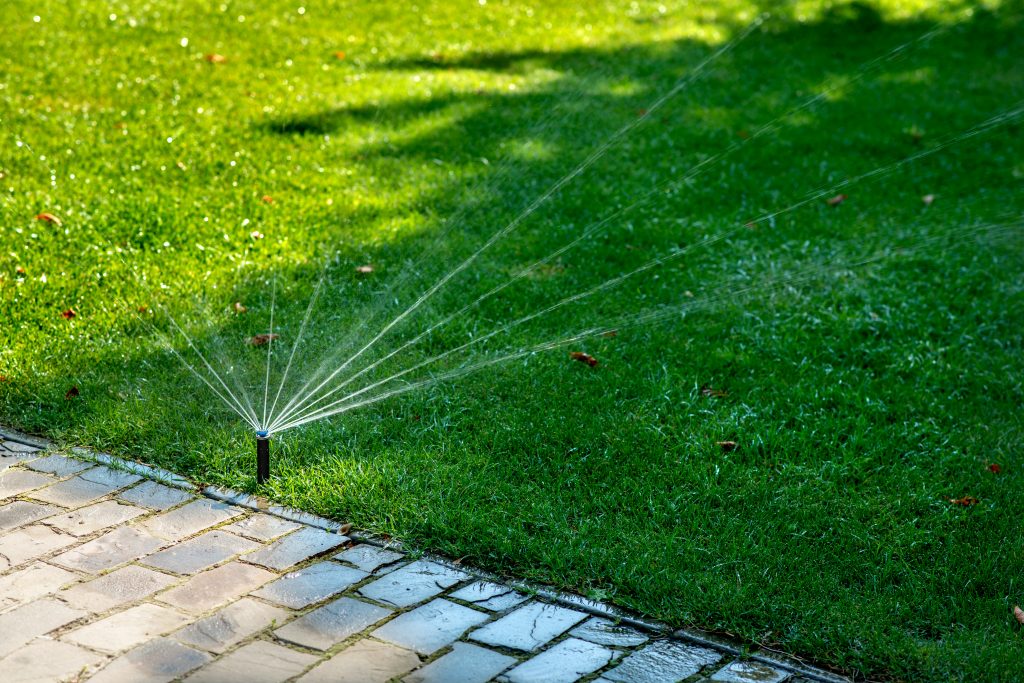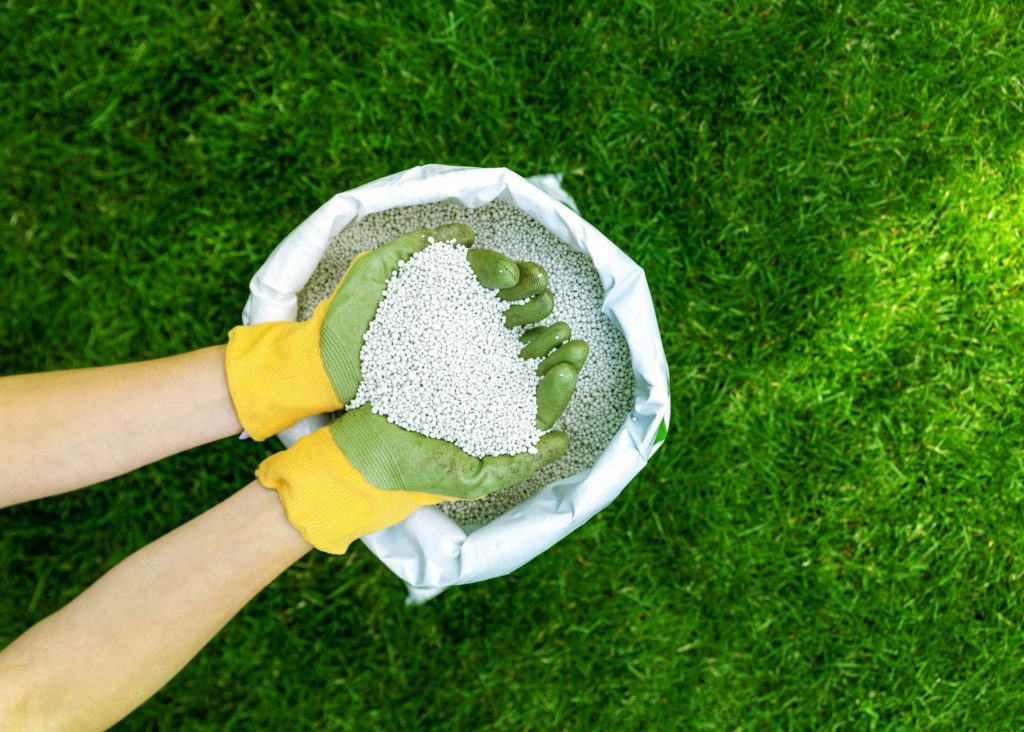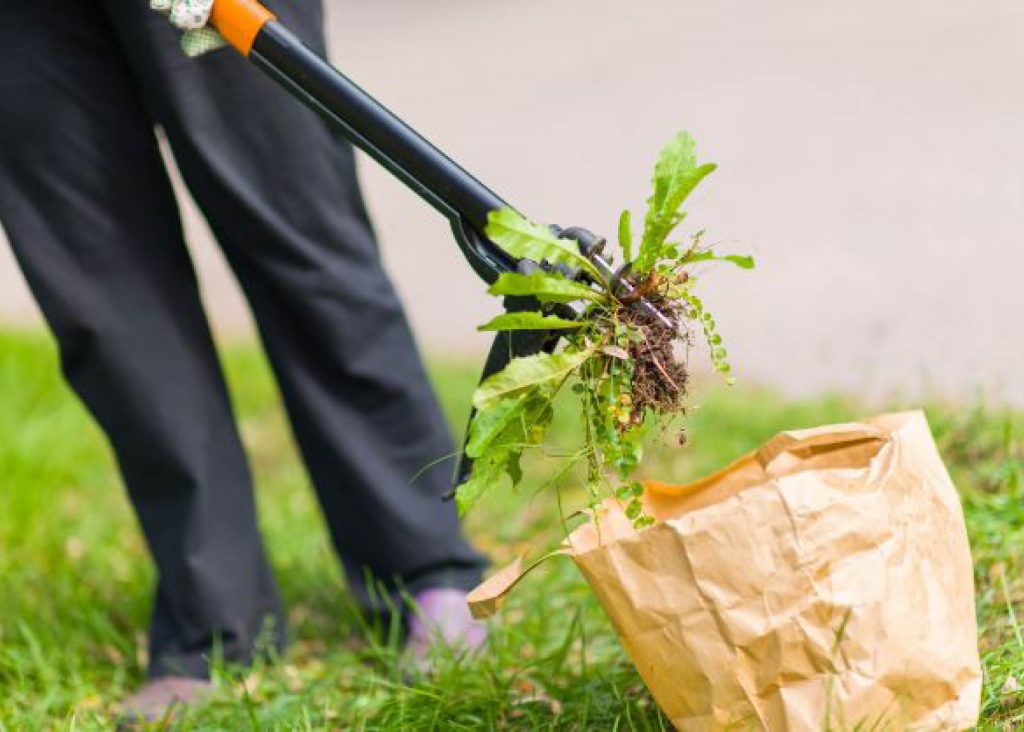How to Get Rid of African Lovegrass in Your Lawn
African Lovegrass (Eragrostis curvula) is a tufted, grassy weed that’s most prevalent in Australian pastures and grazing land, but it can impact home lawns too. Originally ...

Australian homeowners love Bermudagrass (also commonly known as ‘Couch’) because it’s perfectly adapted to our country’s warm climate. It grows voraciously in spring and summer and is best suited to warmer regions, is fast repairing and when properly maintained, gives the soft, green, carpet-like canopy that many think of when they picture their dream home lawn.
Constant scientific refinement has resulted in an exceptionally high performing new generation of Bermudagrass hybrids, with IronCutter Elite Hybrid Bermudagrass the latest high-tech’ variety to hit the market.
Extensive domestic testing shows it to be one of the market’s most exciting Bermudagrass hybrids with its dense, vertical leaf canopy, deep green colour, low thatch profile and ability to withstand Australia’s wide temperature extremes. Exceptional frost tolerance, coupled with outstanding drought tolerance, will prove that IronCutter has a range of applications, from the humble home lawn to sporting fields and everything in between.
IronCutter establishes quickly and wastes no time sending down long roots underground, aiding its drought tolerance and making it one of the hardiest Bermudagrass hybrids on the market. This work underground and a low-seed, deep green, dense leaf canopy above ground makes IronCutter unique and will earn it a spot as one of Australia’s legendary lawns.
IronCutter’s fast-establishing root system delves deep into the soil immediately after laying and has been proven to grow faster and deeper than other Bermudagrass hybrids, allowing it to seek moisture from soil levels that other plants simply can’t reach. This network of underground roots add stability to the soil layer. This translates to a lawn that’s ready to tackle Australia’s tough summers and drought periods.
As well as being able to survive periods of low water availability, studies also show IronCutter will outcompete other Couch/Bermudagrass hybrids when it comes to ongoing water needs, meaning less resources for the homeowner to maintain a lush, green lawn.
Sourcing its immense strength and rapid recovery from its robust root system, IronCutter has an exceptionally high wear tolerance, especially during the key growing periods of spring and summer. Amazingly, it achieves this high wear tolerance without an abundance of thatch – a common crutch that other grass types rely on to minimise damage to the green leaf canopy.
A common misconception is that Bermudagrass – with its soft, fine leaf – is somehow less hardy than other grass types. IronCutter is perfectly suited to high traffic areas and is ideal for families with active kid or pet backyards.
Being one of the most resilient Bermudagrass hybrids on the market, IronCutter benefits from the very latest in pigment engineering, allowing it to achieve a rich, deep green colour that holds well into winter dormancy (when it is a natural process for grasses to lose colour and condition to combat cooler winter temperatures) with an early spring green-up.
At any length, IronCutter boasts a dense, green canopy that will make it a favourite amongst home lawn owners looking for a Couch/Bermuda Grass that stays greener for longer.
A large part of IronCutter’s popularity stems from its outstanding cold tolerance, helping it stave off winter dormancy, and its keen outstanding colour, long into the colder months. This sees its potential applications extend further south than some other Couch hybrids, which cannot survive the chilly winters in the south of the country.
This excellent cold tolerance also brings about an earlier Spring green up, allowing you to enjoy more of that desirable IronCutter colour.
One of the other features cleverly engineered into IronCutter is its ability to thrive and grow rapidly without producing much, if any, seed head. Seed head can be an unsightly feature of some other Bermudagrass hybrids and, as well as ruining the aesthetic of a home lawn, can cause allergic reactions in people and pets. IronCutters’ low seed head allows peace of mind without allergies.
The best planting time for IronCutter will be governed by the climate in your region, as Bermudagrass will always take best when the soil temperatures are warm. Northern states can safely plant IronCutter at any stage throughout the year as the grass will quickly establish in their warmer climates.
Those in the southern states should avoid planting in the depths of winter – not because there’s any risk of harm to the plant, but because the plant’s natural tendency to grow slowly during winter will extend the time it takes for the grass to establish.
Nathan Tovey is MyHome Turf’s resident expert. Decades of experience in the industry has culminated in a role which sees him work alongside turf growers all around the country to provide better quality grass to home lawn owners. Put simply, he’s the man to ask about getting the best out of your lawn.
Here are his top tips for IronCutter:
1. A healthy lawn starts with healthy soil
For established lawns, bio-stimulants like Rootmaxx or Kelp-ER are like a probiotic for your lawn and keep your soil full of the microorganisms and healthy bacteria that keep your soil full of the nutrients that your lawn needs.
If you’re laying a new lawn and notice that your soil isn’t a healthy, dark brown, if it’s full of clay or debris or if it’s rock-hard and difficult to dig through, consider bringing in 5-10cm of quality turf underlay and planting on that instead.
Too little water too often will encourage the plant’s roots to prioritise water at the soil layer, instead of plunging deeper into the earth. Longer roots accessing water deeper in the soil will lead to a healthier plant – one that’s more resilient to temperature extremes, and one that will recover more quickly from bug attacks or other stress.
Give your lawn long, deep watering, less frequently for the best results.
As well as scheduling your watering and mowing, a good lawn maintenance program should include the ongoing use of quality slow release fertilisers, a pre-emergent herbicide and pest protection like Acelepryn, at the very least! The difference between a good lawn and a great lawn is always the extra work the owner is willing to do, and modern lawn care products are cheap and easy to apply.
Be more proactive than reactive with your maintenance – you’ll save money in the long run and have a consistently better lawn as a result.
 Mowing regularly is one of the simplest ways to boost the overall appearance and health of your lawn, and IronCutter gives you the flexibility to mow in several different ways to cultivate the lawn of your dreams.
Mowing regularly is one of the simplest ways to boost the overall appearance and health of your lawn, and IronCutter gives you the flexibility to mow in several different ways to cultivate the lawn of your dreams.
Bermudagrass can be mowed using a conventional rotary lawn mower. It loves being a little shorter than Buffalo and Kikuyu varieties so don’t be afraid to mow low – rotary lawn mowers can usually get down to around 20mm height of cut (the measurement from the soil layer to the tip of the grass blade), but only ever look to take off one third of the length of the blade of grass when cutting to avoid stressing out your lawn.
Conversely, cylinder mowing is becoming much more popular amongst home lawn owners and it’s a great way to achieve a professional look on your IronCutter lawn (or any Bermudagrass hybrid for that matter) and will allow you to take your lawn down much lower. For the average homeowner, 10-15mm seems to be a happy medium, depending on a number of environmental variables (high traffic areas or those affected by shade will like some extra leaf to help with recovery); going much lower requires a very flat and level lawn, as well as an increase in the amount of water and nutrients to keep the lawn looking its best.
Bermudagrass hybrids like IronCutter will grow quickly during spring and summer and will need mowing at least once a week – more often if you’re trying to keep it short. The growth will slow down as soil temperatures drop in autumn and winter, and mowing can be reduced back as far as once a fortnight, depending on how chilly winter gets.
 IronCutter is proving itself to be one of the least thirsty of all the Bermudagrass hybrids, but like all plants, it will always perform best when it’s adequately watered.
IronCutter is proving itself to be one of the least thirsty of all the Bermudagrass hybrids, but like all plants, it will always perform best when it’s adequately watered.
Upon laying, IronCutter will want to be kept wet as the roots establish themselves in the soil. During this time, try adding less water more often to help keep the grass wet, but not so much that you drench the soil. The roots will instinctively dive into the new soil looking for water, and overwatering at this stage will only encourage them to stay at the top of the soil layer.
Overwatering is also a common problem for established lawns and can cause root decay for the reasons listed above, as the extremities of the roots are sacrificed to prioritise surface water. This can impact plant hardiness and can certainly be linked to its drought tolerance. Excess surface water can also be a source of fungal issues.
Similarly, underwatering is just as damaging and can bring on moisture stress, which can present as a loss of colour or condition in the plant, especially limp leaves or – in extreme cases – sections of the lawn dying off. Underwatering can also lead to hydrophobic soil, where the soil is so dry and damaged that it struggles with the uptake of much needed water, even when it’s available.
To avoid this, water correctly. Look to water the lawn twice a week for around 20 minutes during summer (or more often during sustained periods of high temperature), and back that off to once a week when the growth slows during autumn and winter. Naturally, adjust your watering schedule around rainfall in your area.
To maximise your soil’s ability to take in and distribute water, a quality Soil Wetter like LawnPride’s HydraMaxx is a worthwhile addition to your lawn supplement schedule.
 If you’ve ever driven past a great looking lawn and wondered what they’re doing differently, the answer is most likely their fertiliser and lawn supplement regime. Watering and cutting the lawn regularly is great, but to give your lawn that final boost and elevate it to the status of ‘Best Lawn in the Street’, you’ll be looking to feed it full of the right stuff.
If you’ve ever driven past a great looking lawn and wondered what they’re doing differently, the answer is most likely their fertiliser and lawn supplement regime. Watering and cutting the lawn regularly is great, but to give your lawn that final boost and elevate it to the status of ‘Best Lawn in the Street’, you’ll be looking to feed it full of the right stuff.
Some people simply throw down a slow-release granular fertiliser at the start of spring and call it a day, however the truth is your lawn will want more food than that initial hit of Nitrogen (which will likely have broken down within six to eight weeks). Nitrogen, present in granular fertilisers in the form of Urea, is what stimulates the IronCutter lawn to grow. Whilst it is photosynthesis which provides a plant with the energy to thrive, we can add extra supplements to give it the competitive edge!
A product like LawnPride’s Maintain (or Maintain Mini for those cutting low on a cylinder mower) will provide your lawn with slow-releasing Nitrogen as well as a nice dose of Iron (Fe) to assist with turning it an even darker shade of green. You can apply every eight weeks during the growing season (or more frequently if you’ve received plenty of rain), and spoon feed extra nutrients between granular applications using liquid fertilisers like GreenXtra for fast-acting growth and green up.
 Bermudagrass hybrids aren’t immune to invasive weeds, and IronCutter is no different. Different weeds will germinate at different types of the year – bindi and some broadleaf weeds are common in summer, while clover and poa annua are more common to sprout during winter.
Bermudagrass hybrids aren’t immune to invasive weeds, and IronCutter is no different. Different weeds will germinate at different types of the year – bindi and some broadleaf weeds are common in summer, while clover and poa annua are more common to sprout during winter.
Small infestations can usually be dealt with by hand, while more prolific outbreaks will need to be dealt with using a selective herbicide like Broadforce; however some weeds will need specific herbicides for eradication – for example, applications of Tribute will help stop your neighbour’s Kikuyu runners creeping in to your IronCutter lawn.
It’s always easiest to knock weeds on the head before they become a problem, which is why many home lawn owners periodically apply pre-emergent herbicides. These clever chemicals provide residual protection from common weeds and will provide between three to six months protection. Oxafert is one of the market’s most widely used pre-emergent and ,like Onset 10GR, provides a granular fertiliser and pre-emergent herbicide in one convenient, granular application.
Unfortunately, a healthy Bermudagrass lawn can look like a verifiable smorgasbord to lawn beetles who feast on the root system of the plant, killing it from the ground up and meaning that the true extent of their damage often isn’t appreciated until it’s too late. Australian lawns are most likely to suffer from African Black Beetle and Army Worm, though Couch/Bermudagrass can also be affected by Couch Mite.
Damage from lawn pests can present as an excessive buildup of thatch (the spongy layer of dead plant material between the soil layer and the green leaf of the plant) or patches of lawn that rapidly lose colour of the leaf and overall plant vitality or rapidly lose volume and thin out.
If you suspect your lawn is being ravaged by these invisible pests, you can perform the ‘soapy water test’. Get a bucket of lukewarm water and fill it with a mild detergent like car wash or dishwashing detergent and throw it over the affected patch. If, after a few minutes, bugs work their way to the surface then you will need a specialised insecticide like the market’s favourite Acelepryn. It will work wonders and provide up to six months residual protection. Apply at the start of spring and again at the start of autumn to ensure you’re covered all year round.
Lawn disease is another factor to consider but the best defence is good cultivation practices – ensure your mower blades are sharp to avoid tearing the end of the leaf and welcoming disease and avoid watering too late in the day and leaving the leaf wet overnight, which is one of the most common causes of lawn fungal issues. Fungal issues present as discoloured circular patterns in the lawn and can sometimes materialise as coloured spots or web-like mycelium on the lawn early in the morning. If you suspect your lawn has a fungal infection, first identify the issue by cross referencing issues online and apply a Fungicide.
At the time of writing, IronCutter was being grown at scale in Queensland and on the New South Wales/Victorian border, with a network of growers continuing to develop in New South Wales after positive feedback from domestic trials of the grass. It has been available domestically in Queensland since 2023 and its list of commercial applications continues to grow.
Try our Find A Turf Supplier tool and enter your postcode to be connected to growers in your area who can assist with availability and pricing.
Being a premium quality variety and boasting the latest in gene technology, IronCutter Elite Hybrid Bermudagrass is expected to be priced between $12-18/m2, which may fluctuate based on availability, however it’s worth recalling its lower water requirements and nearly year-round green colour which make it ideal for domestic applications.
For pricing and availability in your area, and to speak to your local IronCutter Turf Farmer about its suitability for your application, simply enter your postcode and receive the latest pricing, direct from the farm.